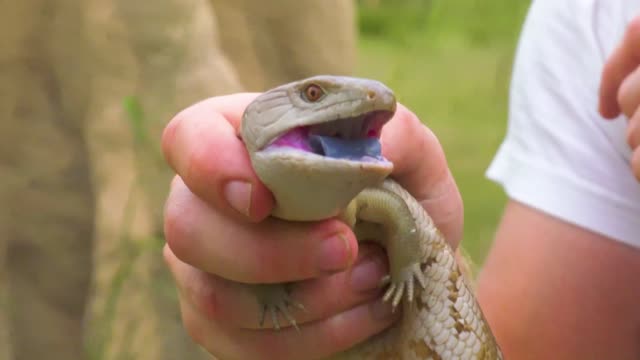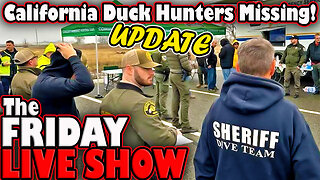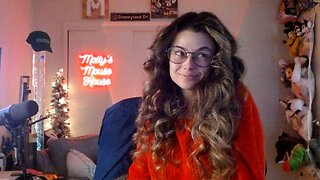Premium Only Content

Why This Skink Has a Blue Tongue!
Why This Skink Has a Blue Tongue!
The Blue Tongue Skink ( Tiliqua scincoides ) is a famous species of lizard in Australia due to its striking blue tongue and short stubby legs and remarkably large size considering it is a skink. The blue tongue is used as a defensive display against any threat such as a predator - they open their mouths wide and stick their blue tongue out. Even though they are not deadly, i.e. no venom, they still can look scary enough that a predatory may be deterred. These lizards are omnivores and generally eat insects but can also eat berries and fruit and flowers.
Also featured in this episode is a black whip snake and a burton's legless lizard.
To keep updated, SUBSCRIBE and hit notifications bell!! - https://www.youtube.com/c/MadeInTheWild
Check out my instagram ! https://www.instagram.com/madeinthewi...
DISCLAIMER
Jack Randall has extensive experience handling and studying wild animals. Where filming with dangerous animals Made in the Wild works with scientists and wildlife institutions. Do not attempt to handle wild animals without appropriate training and permits.
About Jack Randall:
Jack is a zoologist on an adventure! His mission is to show off the world’s most amazing animals. And to do that he must explore the world’s most wild places… You can also catch Jack on his TV show with National Geographic Wild / Disney+ called "Out There with Jack Randall" . Jack was educated at Oxford University following an apprenticeship with the iconic Steve Irwin (which started when Jack was 14!).
What Are Creature Features?
All creatures have evolved different tricks to survive in the wild places they call their homes! Each animal has an awesome story about how they look, what they eat and even how they move! Creature Features spotlight the stories behind these crazy cool adaptations.
The Science:
With over 1 Million species on the IUCN Red List of Endangered Species, animal populations are in decline the world over. This is due to many reasons but what we know for sure is to keep the planet's amazing diversity of wildlife we need to learn as much as possible about where and how these creatures live their lives. Collating all the data we are gathering will help build a picture of which habitats are key to sustaining the largest diversity of life on planet earth.
Thanks to our amazing team without whom the series would not have been possible!
Sarah Ash, Camera & Edit
Mike Wyatt, Graphics
-
 1:30:23
1:30:23
Twins Pod
19 hours agoHe Went From MARCHING With BLM To Shaking Hands With TRUMP! | Twins Pod - Episode 45 - Amir Odom
149K32 -
 1:02:30
1:02:30
Exploring With Nug
21 hours ago $4.46 earned2 Duck Hunters Missing After Kayak Capsizes!
72K4 -
 46:48
46:48
Mally_Mouse
14 hours agoLet's Hang!! -- Opening Christmas gifts from YOU!
78.8K1 -
 44:55
44:55
Athlete & Artist Show
20 days ago $2.43 earnedNHL 4 Nations Snubs, Was Hawk Tuah Coin A Scam?
74.6K -
 33:47
33:47
Stephen Gardner
20 hours ago🔥Pentagon Whistleblower UNLEASHES on Biden and Obama!
130K289 -
 2:20:30
2:20:30
The Dilley Show
21 hours ago $29.01 earnedRoger Stone in Studio plus Q&A Friday! w/Author Brenden Dilley 12/27/2024
105K22 -
 1:57:02
1:57:02
The Charlie Kirk Show
19 hours agoThe Great H-1B Battle + AMA | Lomez | 12.27.24
193K300 -
 11:39
11:39
Russell Brand
1 day agoWhat You're Not Being Told About The Syrian War
187K303 -
 DVR
DVR
Bannons War Room
1 year agoWarRoom Live
101M -
 1:49:21
1:49:21
Film Threat
22 hours agoBEST AND WORST OF 2024 + SQUID GAME SEASON 2 | Film Threat Livecast
65.9K7